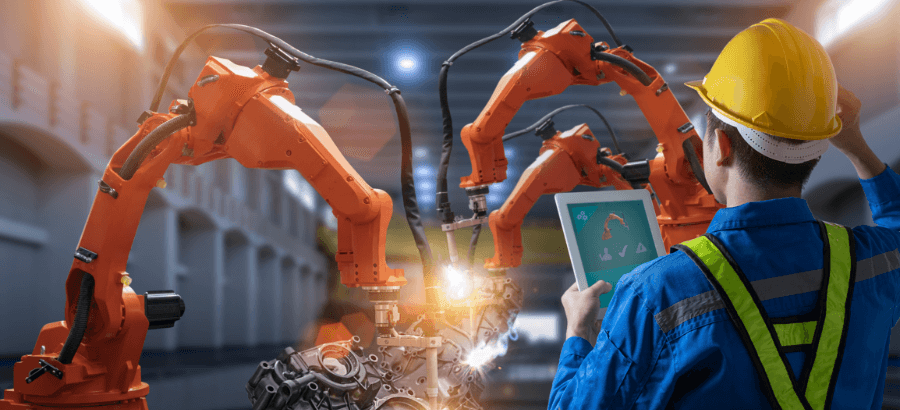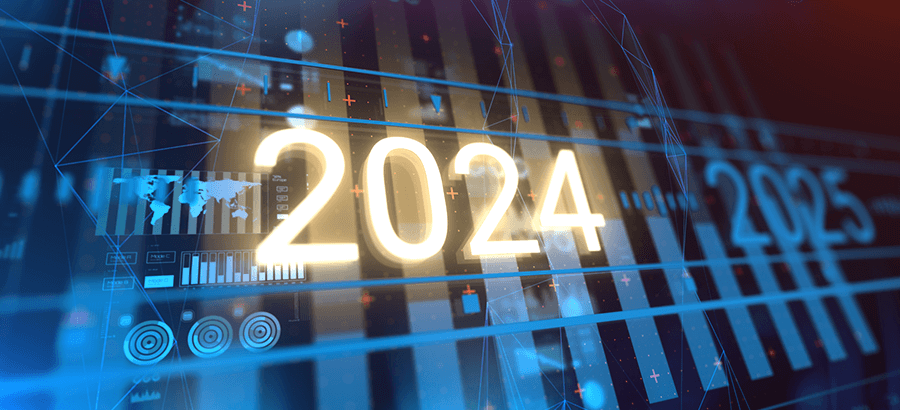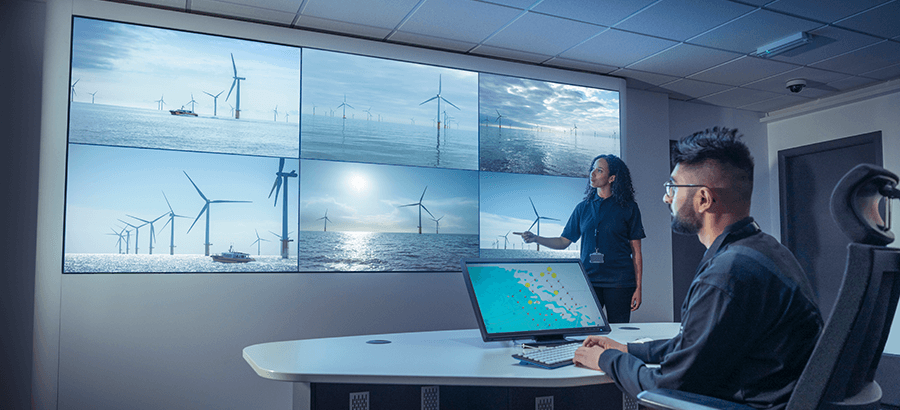The pandemic has placed unprecedented pressure on manufacturing companies, which have been forced to adapt to supply chain interruptions, market shifts and labor shortages. But with these challenges have come opportunities – to reconfigure work, transform operations and emerge with more resiliency and ingenuity than ever before.
Manual production lines are switching to automated assemblies and valuable data is being used to discover actionable insights into manufacturing operations. IoT sensors in the supply chain and robotics in factories are fluently available. In the last decade alone, we have seen factories move from basic digitization to more predictive power. Technology is making an impact at every step of the manufacturing process and across nearly every industry.
In part 1 of the smart factory series we unpacked digitization, digitalization and digital transformation. In part 2, we looked at the transitional steps towards the smart factory and the benefits manufacturers can gain from this. In this blog we will envision the factory of the future and how it will change and improve the factory structure and processes.
What does the smart factory mean for business?
The smart factory evolution is about building upon the advancements of industry 4.0 by automating the collection of data from machines, devices and applications then transforming that data into immediate insights. Rooted in interconnectivity, automation, artificial intelligence, machine learning, robotics, and real-time data — tomorrow’s smart factories will continuously collect data through connected machines, devices, and systems. All of which will enable the following:
- Automation of mundane tasks allowing people to focus their time and attention on high-value tasks
- Allow people to safely do jobs using machines that have historically been considered dangerous thus also reducing injuries
- Improved quality and availability of information to provide critical business insights
- A faster, more efficient, more effective production process resulting in a shorter time-to-market
- The creation of manufactured products through economically-sound processes that will minimize negative environmental impacts whilst conserving energy and natural resources
- Increased efficiencies, reduced costs, boosted profits, and ultimately growth
Through digital transformation, here is some insight into what manufacturing processes might look like in the not-so-distant future:
1.A connected and flexible digital shop floor
In the smart factory, manufacturers will leverage the Internet of Things (IoT) to reshape product development and production. IoT is a set of technologies that help to connect physical objects into networks so they can monitor their local environment, collect data, communicate with each other, and with external factors such as other systems and humans. IoT and connectivity combined with analytics and artificial intelligence (AI) will improve asset efficiency, decrease downtime and unplanned maintenance. In the factory this includes tracking productivity across the production floor and accelerating new product development by providing data to decision makers faster than ever before. This will also enable manufacturers to uncover new sources of value in services, for example, IoT devices will keep track of the final product from the factory to the customers’ hands. In a smart manufacturing product lifecycle, these devices can report back location, time, and other details to improve services and production.
2.Human-tech augmentation
Artificial Intelligence (AI) systems automate processes and machines, thus making production systems more flexible and adaptable. In the smart factory data-driven analytics is highly versatile and capable of fulfilling different roles in the business, whether it is serving as an advisor or supporter. For example, an AI-powered co-bot can assist with operations within the factory keeping employees on track, help maintain efficiencies and ultimately even solve some fundamental risks. At their core, augmentative systems allow manufacturers to meet growing demands and enable greater worker efficiency, safety, and productivity.
3.Sustainable supply chains
The factory of the future is hyper-efficient and sustainable. Automation through digital technology can provide manufacturers greater visibility into their production processes, equipment wear-and-tear and more importantly energy usage. Armed with this data, organizations can then optimize production, improve asset efficiency and predictive maintenance to diminish energy loads as well as reduce material and water waste – all key factors in building sustainability.
4.The use of low-code/no-code
Low-code/no-code (LCNC) tools are designed to make it relatively easy for non-technical people to design, build, and launch applications quickly. These tools use visual programming interfaces that allow solutions to business problems to be created faster than could be accomplished with traditional software development. LCNC tools empower manufacturers by enabling the development of different applications required to create data-driven factories. LCNC platforms are increasingly becoming popular among manufacturers as they offer the modernization of processes, customization of digital solutions and flexibility for implementation and ultimately effective digital transformation.
Embracing technology
The manufacturing sector is in an exciting state of fluidity and evolution. At the heart of the smart factory is data to predict, respond, and adapt to market trends to optimize business processes and personalize the consumer’s experience. ERP allows for the centralized collection of data enabling visibility in the entire factory to revolutionize the way organizations design, plan and execute workflows. By integrating ERP systems with emerging technologies such as IoT and AI, manufacturers can create more intelligent ‘smart’ operations and further optimize their productivity. Ultimately, ERP systems aim to transform organizations’ workflows – and this is precisely the goal of the smart factory.
The development of the smart factory is diverse: manufacturers are coming at this from very different places, some are mature, others are starting out. Manufacturing processes differ from business to business and the challenges that need to be solved vary; different technologies also lend themselves to solving different business issues. While the general trends outlined in this article seem likely, the factory of the future will not follow a single paradigm. Change will come more quickly in some places or look different in others. In the meantime, manufacturers need to consider these emerging technologies in their strategies. Previous industrial revolutions evolved over the course of multiple generations; however, the pace of industry 4.0 does require a more rapid response if manufacturers want to thrive into the future.








2 thoughts on “The smart factory Part 3: What does the factory of the future look like”